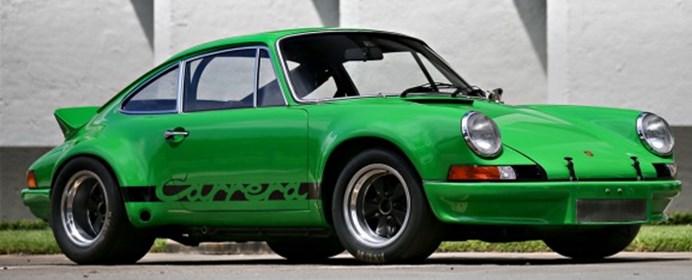
2 minute read
TECH CORNER

RS cars continued from previous article…. areas to tolerate the dethe rules) to accommodate the massive 9” front and 11” rear Fuchs wheels. The front air dam was redesigned and now housed a large external oil cooler. Remarkably the RSR was almost 140 pounds lighter than the 2.7 RS. This was no easy task as it also had to be strengthened in three key mands of the additional Porsche now targeted the FIA Group 4 GT performance and a lightclass, in doing so the 911 2.7 RS was develweight roll cage was fitoped into a dedicated race Car; the 2.8 RSR. ted. The attention to detail in this weight saving Of the 1,580 2.7 RS cars built only 55 were dicannot be emphasized verted to Porsche’s race shop Werk 1 for enough. Porsche had a conversion to the 2.8 RSR. long history of effective methodology around weight saving and this Distinguishing features included the much knowledge was brought to bear on the 2.8 larger fender flares (the widest allowed by RSR.
Advertisement


And this….


The car was lower with all the rubber removed from the suspension joints allowing The class rules allowed a maximum displacefor much more accurate setup. ment of 3.0 litres.
The brakes were derived from the 917. The At the heart of the car was the revised enrotors featured full axial venting and were gine the Type 911/52 (above). cross drilled. They employed light weight finned 4-pot calipers. The 2.7 engine was now fitted with 92mm pis-

tons/cylinders increasing the displacement to 2,806cc. A compression ratio of 10.3 :1 was obtained and the motor was also fitted with larger valves (valve timing was the same as the 906), twin plug ignition and lightened internal components. With ‘high butterfly’ fuel injection the 2.8 produced 300 horsepower at 8,000 rpm. This was coupled with a specifically designed 5-speed gearbox fitted with limited slip differential.
Final assembly was performed at Werks 1 and all cars were delivered “Race Ready” including a roll cage, race seat, safety harness, fire suppression system and the electrical cut off switch; as required by the regulations.
Success followed immediately in 1973 with a win at the first Championship of Makes race. By the end of the season the RSR had won six of the nine rounds in this championship. Further wins followed at the Daytona 24 Hour, the 12 Hours of Sebring and the Targa Florio.
The RSR was now dominating GT racing.
For 1974 Porsche continues the development of the RSR and it’s derivatives.
More to come!
Paul Rossmo VIR Technical Chair








